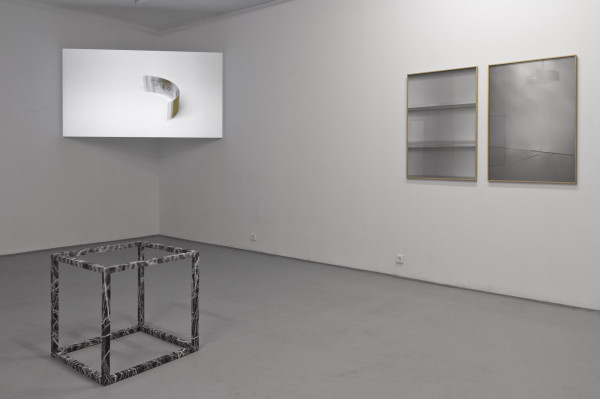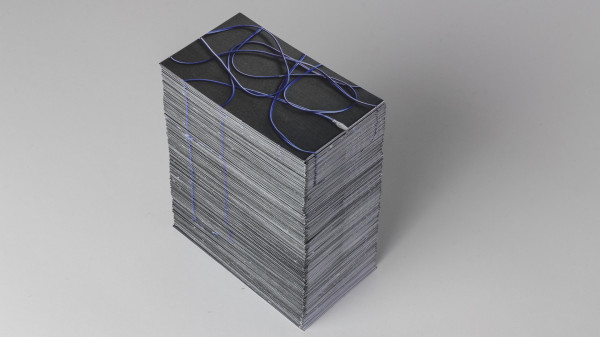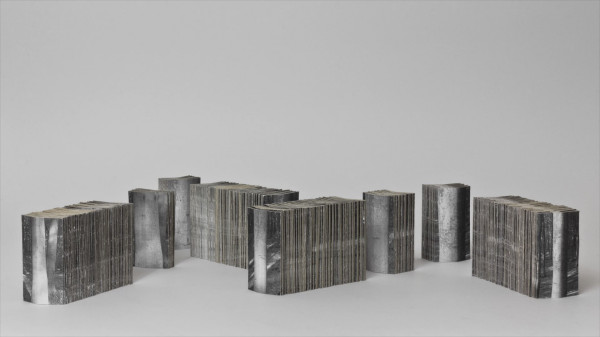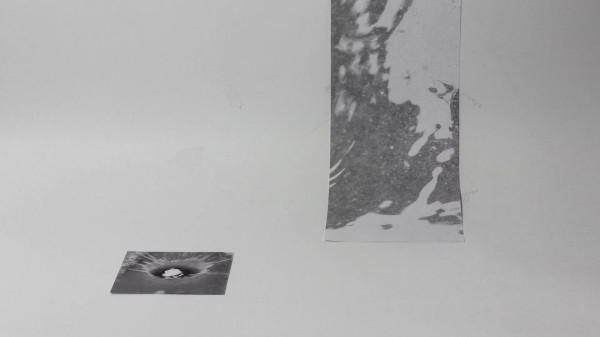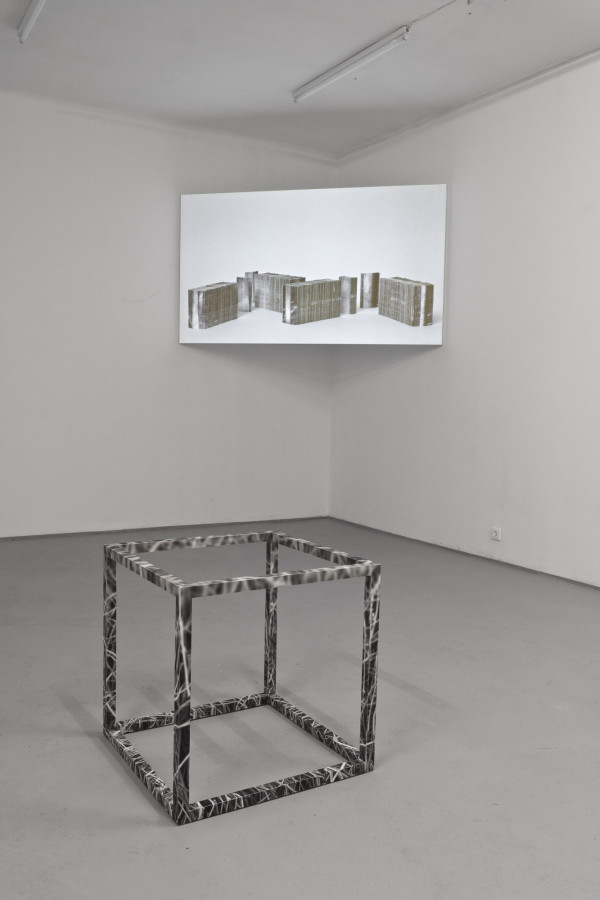Mateusz Sadowski
Wednesday, 15 January 2014
Work from The Resonance
@ Galeria Stereo 10 January – 22 February 2014
“ML: Can you briefly describe the technique in which the film “Resonance” was made?
Mateusz Sadowski:
To simplify things it’s enough to say that the film was made in the technique of stop-motion animation. Technically speaking the realization of “Resonance” can be also described through the process of transformation that the image underwent: from the video registration, through the separation of the stills in the computer, then printing of these different stills, achieving a new physical form, and then photographic registration in a studio, again returning to the computer and editing in order to achieve the format of a film.
Do you think that the process of reshaping of the film material can be considered as a metaphor of some inner, mental process that is connected to perception of the world?
Yes. I think perception of the world is tightly attached to the constructing by the brain the structure of what we perceive. Such structure isn’t complete, it contains mistakes and is open to transformation, to corrections. Thanks to that an increasing over time understating of various phenomena in the world is possible, although it isn’t a linear process, of course. Coming back to the film. It took me quite a long time to discover the method step by step, not to mention the technical difficulties. Building the whole process of making of this film led me to changing or transforming the earlier scenes. In the end plenty possibilities of presenting appeared that I wasn’t able to forsee previously. When closing the production I felt pleasant insufficiency due to the appearance of ideas for the next film, because I could not fit them all in this one.
„New physical form” of the image that you mention is a writting-pad of film stills – a two- and three-dimensional thing at the same time. How did you decide to place an animated image in a wider static frame and show as an element of a composition?
From a desire to show several “realities” that have different qualities, which together form one. At the very beginning I was thinking about recreating an idea for sound piece that haunted me when I was 15 years old. The pieces was meant to be impossible to be listened to from the beginning till the end. Its structure was meant to be based on a consonance of different harmonies, melodies, rhythms and other attributes in such a way that they last simultaneously and are coupled with my emotional state. I believe that it was a vision that, if there were such necessity, could be classified as religious.
Back then I had no means through which I would have been able to express something like that and religion still does not appeal to me. In order not to fail again after 14 years, I began to write a visual piece. I read and thought about different physical theories that propose parallel worlds, about the disputes whether the world has continuous structure (analogue) or non-continuous (discrete). I had a lot of time for those meditations because the work on the animation required performing arduous tasks, which without some “material” in the head would have been beyond endurance. For keeping the balance I read also different literature, Robert Walser’s, among others. The film was being made parallelly. It was meant to be just like a strange theory made up during a crazy stroll when the world seems beautiful.
The cycle „Once and for all” consists of a number of photographs that in short can be divided into two series: the first consists of studio photographs that present variety of models, the second is a series of photographs of real objects or calibrated details of objects. What concept hides behind the second series?
In the second series I create divisions in space that is in the frame and I do it by registering such cut-outs of an apartment-space that are anonymous, which means that they could exist in many places, they have no important pecularities. In the “first” series I also create divisions in the image of the frame, however I construct them relating to models created from the scratch. What’s interesting, I notice common features of both methods. One of those characteristics are perceptual qualities of the image, the possibility of manipulation of the space in different scales. Another one is the realization that “real” space that I photograph, unifies itself with the “model” one. I speak about that moment when a wall starts to resemble a sheet of paper, out of which then I create a model in 5 minutes. Thus a wall can acquire the features of a model. I should add that it is not a concept that the photographs of the cycle illustrate, but only my secondary considerations based on the images that I make. The fundamental problem of the whole cycle is like that: how to achieve an interesting image using the weakest means possibly, or: how to strengthen the power of expression with the use of uninteresting matter. A strong image for me is the one that stimulates imagination.
What is according to you the role of the „point of view” in finding an image of the right power?
It is a necessary element that I try to make use of consciously. Most often I place the photographed three dimensional objects in a way that takes into consideration the point of view of a standing man. Thus, I can influence the impression of the scale of the shown space, enlarge and diminish it. Thanks to the fact that the used materials are recognizable, so the real scale is not actually hidden, the power of the image is build through the tension that accompanies the decoding, recognizing what is familiar.
Although the result of these endeavours is two dimensional photograph, the viewer has an impression of dealing with a three-dimensional object. Flattening does not deprive the objects of spatial features. That seems to be the leading thread of your latest works – suggesting an additional dimension of things, in a literal and metaphorical sense.
I begin work at the moment when I begin to lack the words, and in order to check something I need to do it, in order to see it. I am interested in creating such meanings of visual situations that I am not able to meaningfully verbalise. Perhaps this is where this additional dimension of things comes from.”
Interview by Michał Lasota
via Dust
